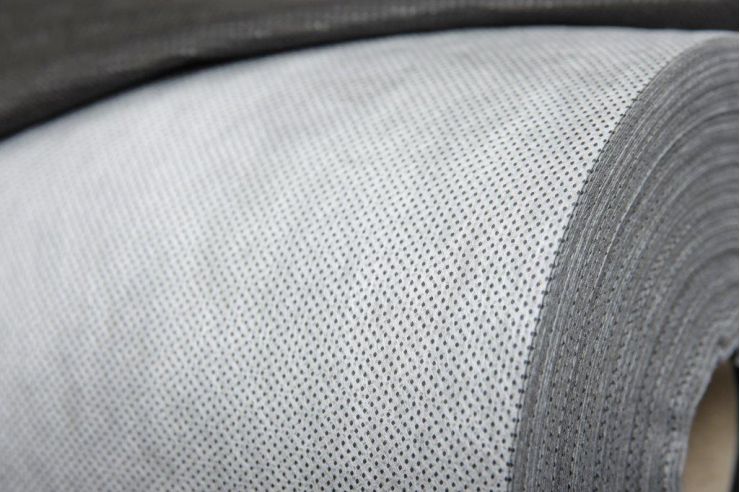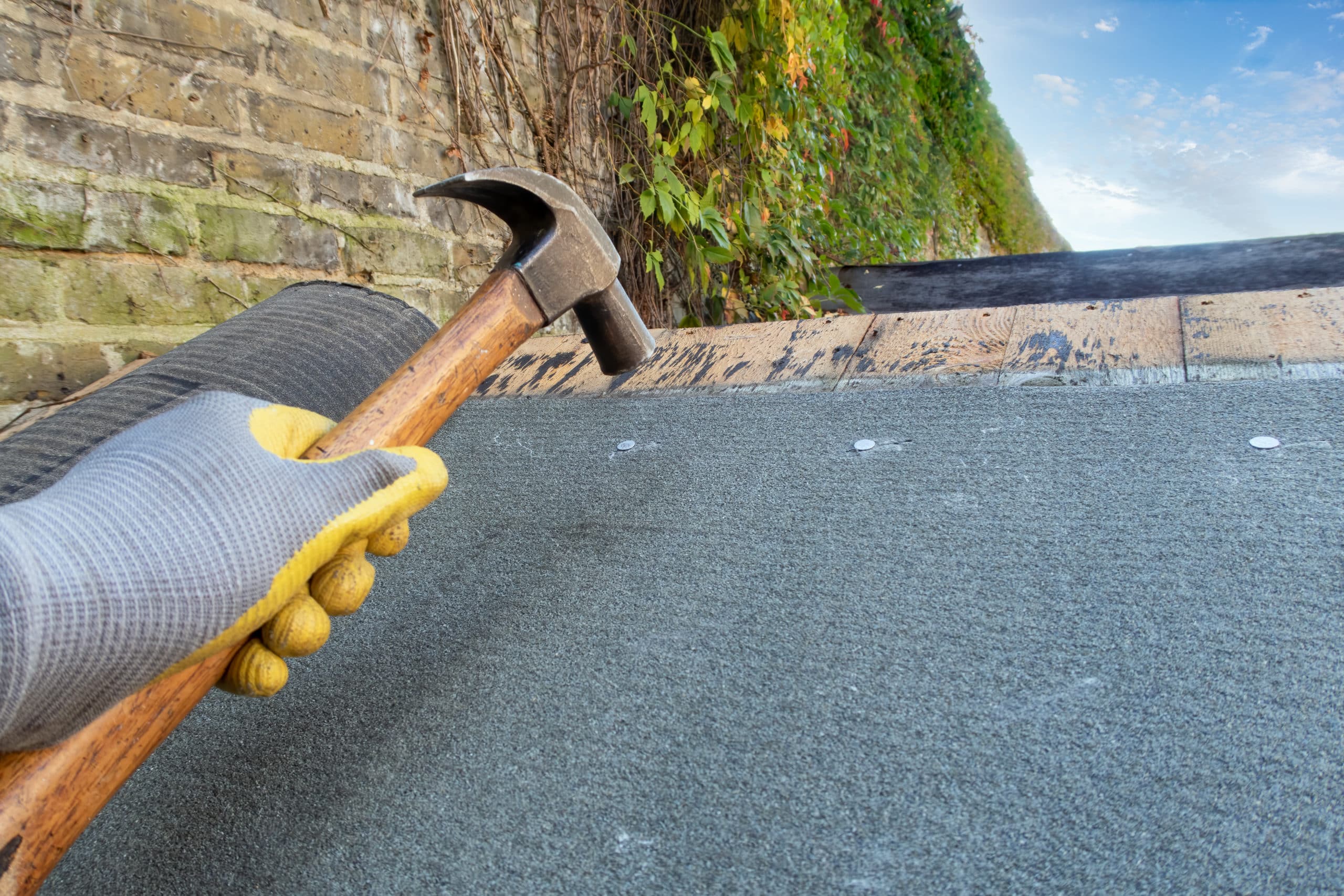22 Sep 2024
Roofing Felt vs. Other Materials: A Comprehensive Comparison
Choosing the right type of roofing for your project is an important decision that can significantly impact the durability and longevity of your structure. While there are numerous types of roofing available, roofing felt has remained a popular choice for years. Understanding the basics of roofing felt, its pros and cons, and exploring alternative roofing materials will help you make an informed decision.
Key Highlights
- Roofing felt, also known as tar paper, is a cost-effective roofing material commonly used in the UK for waterproofing roofs.
- It is available in different types, including torch-on felt, self-adhesive felt, and shed felt, each with pros and cons.
- Alternatives to roofing felt include synthetic underlayments and EPDM rubber roofing, both offering unique advantages.
- Proper installation is crucial for the effectiveness and longevity of any roofing material.
- Considering factors like budget, roof type, and desired lifespan can help you make an informed decision when choosing a roofing solution.
Introduction
Choosing the right type of roofing for your project is an important decision that can significantly impact the durability and longevity of your structure. While there are numerous types of roofing available, roofing felt has remained a popular choice for years. Understanding the basics of roofing felt, its pros and cons, and exploring alternative roofing materials will help you make an informed decision.
Understanding Roofing Felt: An Overview
Roofing felt, a cost-effective and widely used roofing material, has been a staple in the UK for many years. Often referred to as tar paper, it serves as a protective barrier against water ingress, ensuring the structural integrity of your roof. The composition and application of roofing felt can vary, but its primary function remains consistent: waterproofing.
Over the years, roofing felt has undergone advancements in manufacturing and materials. Today’s roofing felt often incorporates modified bitumen, a more resilient and flexible material than traditional tar-impregnated felt. This evolution has significantly enhanced its durability, making it a reliable option for both residential and commercial roofing projects.
The composition of roofing felt
Roofing felt, a staple in construction, is composed of a fibrous membrane typically made from paper or polyester. This membrane is then saturated and coated with asphalt, a petroleum-based product, to provide its water-resistant properties. The asphalt saturation ensures the roofing felt effectively repels water, preventing leaks and water damage to the roof deck.
The use of either paper or polyester in the fibrous membrane influences the felt’s strength, durability, and overall performance. While paper-based felt is more cost-effective, polyester-based roofing felt offers higher tear resistance and a longer lifespan, making it a more robust choice for areas with demanding weather conditions.
To further enhance its waterproofing capabilities, roofing felt is often coated with fine mineral granules. These granules serve as a protective layer, shielding the asphalt from the damaging effects of ultraviolet (UV) radiation. This UV protection extends the lifespan of the roofing felt, ensuring its effectiveness in safeguarding your roof for an extended period.
Common Uses of Roofing Felt in the UK
In the UK, roofing felt is a versatile material employed across a range of roofing applications. One of its most common uses is as an underlayment for pitched roofs, where it acts as a secondary barrier against water ingress, providing an additional layer of protection beneath the primary roofing material, such as tiles or slates.
Apart from pitched roofs, roofing felt finds extensive use in flat roof construction. Its water-resistant properties make it suitable for flat or low-sloped roofs, shielding the building from water damage. Roofing felt is a popular and cost-effective choice for various outbuildings, including garages, sheds, and extensions.
When it comes to shed roofing, roofing felt is preferred for its affordability and ease of installation. It effectively protects these structures from the elements, safeguarding tools, equipment, and belongings stored within. Whether protecting a garden shed or providing an extra layer of defence beneath tiles, roofing felt’s versatility makes it indispensable for construction in the UK.
Pros and Cons of Roofing Fet
Roofing felt is a cost-effective and widely accessible roofing material with a long history of use. For homeowners and builders on a budget, it presents an attractive option for protecting structures from the elements. Installation is relatively straightforward, and repairs, when needed, can be managed without extensive expertise.
However, roofing felt, despite its advantages, has some drawbacks. Its lifespan, while acceptable, is shorter than some modern alternatives. Additionally, roofing felt can be susceptible to damage from extreme weather conditions, potentially leading to leaks if not properly maintained or if nearing the end of its useful life.
Advantages of Choosing Roofing felt
- Cost-effective: Roofing felt stands out as one of the most affordable roofing materials available, making it a budget-friendly choice for various projects.
- Easy Installation: Due to its lightweight nature and manageable size, roofing felt is generally easy to install, contributing to faster completion times and reduced labour costs.
- Durable Protection: When properly installed, roofing felt provides a reliable barrier against water ingress, protecting the roof deck and the building’s interior from water damage.
Potential Drawbacks of Roofing Felt
- Susceptibility to Water Damage: While designed to resist water, roofing felt can be vulnerable to damage from ponding water, especially on flat roofs with inadequate drainage.
- Limited Lifespan: Compared to some alternatives, roofing felt has a shorter lifespan, typically ranging from 10 to 30 years, depending on factors like weather conditions and maintenance.
- Prone to Damage: Extreme weather conditions, such as high winds or hail, can potentially damage roofing felt, leading to tears and leaks if not addressed promptly.
Comparing Roofing Materials: Alternatives to Felt
While traditional roofing felt continues to be a viable choice for many, advancements in roofing technology have led to the emergence of alternative materials like synthetic underlayments and EPDM rubber roofing. These options offer enhanced durability, extended lifespans, and improved resistance to weather extremes, making them increasingly popular choices for homeowners and builders.
Understanding the unique features and benefits of each alternative allows for a more informed decision tailored to specific project needs and budget considerations. As roofing technology evolves, having a clear understanding of these alternatives can empower homeowners and builders to select the most suitable and sustainable roofing solution for their project.
Synthetic Underlayments: Features and Benefits
Synthetic underlayments present a modern approach to roofing, offering several advantages over traditional felt. Crafted from durable synthetic materials like polypropylene or polyethylene, these underlayments boast exceptional tear and puncture resistance, effectively safeguarding roofs against potential damage.
| Feature | Benefits |
| Lightweight | Facilitates easier handling and installation |
| High Tensile Strength | Resists tearing and punctures effectively |
| Water-Resistant | Provides a robust barrier against moisture |
| UV-Resistant | Endures prolonged sun exposure |
Synthetic underlayments also excel in their dimensional stability, maintaining their shape and size even when exposed to temperature fluctuations. This crucial attribute minimises the risk of buckling or wrinkling, common issues with traditional felt, ensuring a smooth and aesthetically pleasing roofing system.
EPDM Rubber Roofing: A Modern Alternative
EPDM rubber roofing has gained popularity as a durable and weather-resistant roofing option. Its longevity is a key advantage, as EPDM rubber roofing can last for several decades, making it a wise long-term investment for homeowners. Its inherent flexibility allows EPDM roofing to withstand the expansion and contraction caused by temperature changes, minimising the risk of cracking or leaking.
Moreover, EPDM rubber roofing effectively resists damage from UV radiation, ensuring lasting performance and reduced maintenance needs over its lifespan. Available in large, seamless sheets, EPDM rubber roofing minimises the number of seams, further reducing potential leak points and creating a cohesive and aesthetically pleasing roof covering.
Installation Techniques: Felt vs. Other Materials
The installation of roofing materials plays a crucial role in the performance and longevity of any roof. While the specific techniques may vary depending on the material chosen, proper installation ensures that the roofing system effectively protects the building from the elements. Understanding these techniques, their intricacies, and differences is essential for homeowners contemplating DIY roofing projects or seeking a comprehensive understanding of the process. It also highlights the importance of relying on experienced and qualified roofing professionals to ensure the job is done correctly, providing long-lasting protection and peace of mind.
Traditional Installation Methods for Roofing Felt
Traditionally, roofing felt installation involved overlapping layers of felt fixed to the roof deck using nails or staples. These layers are strategically placed to create a water-resistant barrier, shedding rainwater away from the roof’s surface. Proper installation techniques for roofing felt, such as maintaining appropriate overlaps and ensuring secure fastening, are essential for a watertight seal.
Depending on the type of roofing felt used, additional steps, such as applying adhesive or using a torch-on method, may be needed to create a secure bond between the felt layers.
Innovative Approaches to Installing Alternative Materials
Unlike traditional roofing felt, innovative approaches to installing alternative roofing materials often incorporate advanced techniques to enhance durability and streamline the process. For instance, self-adhesive membranes are gaining traction, eliminating the need for nails or staples.
Similarly, some modern roofing materials, like EPDM rubber roofing, utilise adhesives exclusively for a seamless, watertight installation. These adhesive systems bond firmly to the roof deck, providing a secure and long-lasting hold, even in extreme weather conditions. These advancements in installation methods aim to reduce installation time, enhance weather resistance, and improve the overall longevity of the roofing system.
Conclusion
In conclusion, when deciding between roofing felt and other materials, it’s essential to consider factors like composition, durability, and installation techniques. Roofing felt offers advantages such as cost-effectiveness and ease of installation, but it may have drawbacks like a shorter lifespan and susceptibility to weather damage. Exploring alternatives like synthetic underlayments or EPDM rubber roofing can provide more modern and long-lasting solutions. Understanding the pros and cons of each material will help you make an informed decision based on your specific roofing needs. Make sure to weigh all considerations before choosing the right roofing material for your project.
Frequently Asked Questions
What Is the Lifespan of Roofing Felt Compared to Other Materials?
Roofing felt typically lasts between 10 and 30 years, depending on the type of roofing felt and maintenance, while alternatives like EPDM rubber roofing can last up to 50 years. The durability and lifespan of any roofing material depend on factors like installation quality, weather conditions, and maintenance practices.
Can roofing felt be recycled or repurposed in the UK?
While recycling options for roofing felt are limited in the UK, some efforts are being made to develop recycling methods. Currently, repurposing old roofing felt for projects like weed control or garden pathways is an eco-friendly practice.
Eurovent Breathable Roofing Felt/Underlay Membrane – 1.5m x 50m (75 SQ/M) – 120 G/SM – BBA Approved

Eurovent Breathable Roofing Felt/Underlay Membrane – 1.5m x 50m (75 SQ/M) – 120 G/SM – BBA Approved
Product code: 154002
- Heavyweight, high performance vapour permeable membrane / underlay for cold and warm roof applications which give major benefits over traditional roof underlays.
- Airtight, vapour-permeable membrane is extremely water-resistant, and can be used for all supported and unsupported pitched roofs.
- 3 Layer spun-bonded heavy duty membrane.
- Clean & easy to use. Lightweight & flexible
- Excellent tensile strength. UV stable for up to 4 months
- BBA Approved. Product is tested to EN 13859-1 and is CE certified. LABC Certified


